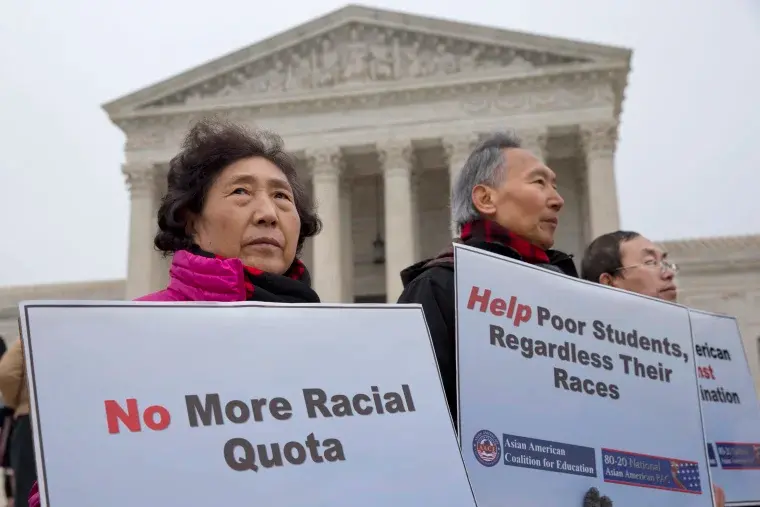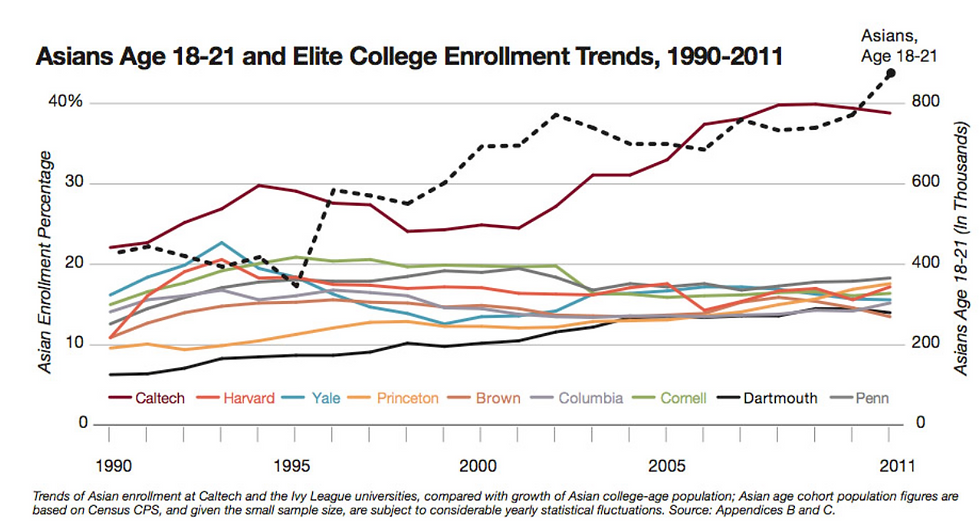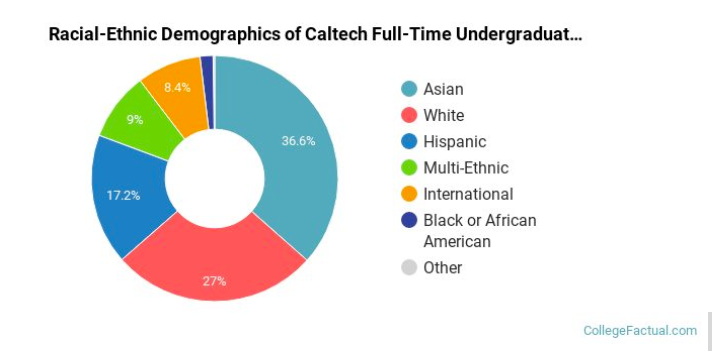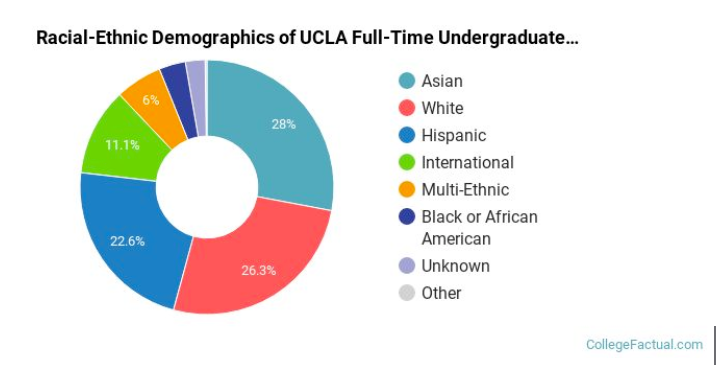
Asian Discrimination
Despite being one of the fastest-growing racial groups in the country, Asians have frequently been subjected to various forms of discrimination and prejudice. Discrimination against Asians is a multifaceted and long-standing problem that has persisted in the United States, from the historical oppression of Chinese railroad workers to the widespread discrimination against various Asian nations, including the Japanese, during World War II. In today’s society, it is essential to highlight the most potent and widespread tool of discrimination against the Asian community: affirmative action. Affirmative action is the policy in academia and employment where Asians may face unfair treatment and are disadvantaged compared to other racial groups. The use and implementation of affirmative action have led to debates over its effectiveness and ethical implications, especially for the Asian community.
Affirmative action has impacted a significant percentage of the Asian community and has had a devastating impact on the most essential part of any family, regardless of culture, ethnicity, or nationality; the children. Discrimination against Asians in college admissions is by far the most potent weapon used to disadvantage the statistically most intelligent race in what should be a meritocratic system of college admissions. The Asian population has grown significantly over the last twenty years, yet their admissions percentage has remained unchanged since 1990. On SAT scores, Asian applicants scored, on average, over 150 better than their white counterparts and over 300 points more than their black counterparts.

This graph shows that none of the eight Ivy League schools have allowed a campus population of over 20% Asian. In a New York Times article, Amy Qin stated that countless Asian applicants will “try to appear less Asian, to higher their chances of making it into Ivy League Schools.” As said by professional college counselor Sasha Chada, “My company’s Latino clients often emphasized their ethnicity and their engagement with Hispanic cultural organizations on their college applications; on the other hand, my company frequently gave Asian American students the opposite advice, urging them to shift away from “classically Asian activities.”
There are countless ways to judge an applicant in college admissions, whether extracurriculars, clubs, sports, or character. Nonetheless, there are two very objective ways of measuring the type of intelligence known as book intelligence:
GPA (Grade Point Average) and Standardized Testing (SAT and ACT)
The average Asian unweighted GPA is the highest in America at a whopping 3.26 compared to 3.09 for White Americans and 2.69 for Black Americans. The reasons for this are plentiful; however, as there is no consensus, this essay will not address it. However, it is essential to notice that the difference between an average Asian GPA and Black GPA is almost .6, or between an A and a B.
From an SAT perspective, 30% of Asian students that scored 1400-1600 on the test got into Ivy’s; this number is 40% for White applicants and 78% for Black applicants. You are 2.7 times more likely to get admitted into eight of the most prestigious universities in America based on your skin color. This treatment of Asians is unfair in every way, shape, or form. There is no denying that SAT scores and GPA aren't the only criteria used for college admissions; however, it is an undeniably important factor that should be considered.
Affirmative action is a very controversial topic mainly because of the aura of misinformation around it. It doesn't help exclusively lower-income people who are also minorities; it just helps minorities. Why not have Affirmative Action based on socioeconomic status? That's where you'll see the most “diversity, equity, and inclusion.” This injustice towards the Asian community is truly hard to watch. What hurts even more is that countless Asian families have attempted to sue these major universities but hardly ever win because they are small entities compared to a league of eight schools with billions of dollars at their disposal.
There's significant proof that Ivy Leagues all have an evident cap of the max Asian population, as not a single Ivy has a higher than 20% Asian student body. Meanwhile, all the UCs that don't have affirmative action have significantly higher Asian student populations.



As very evidently demonstrated in those charts in comparison to the following.



Affirmative Action Schools
White Population: 38%, 41%, 51%
Asian Population: 15%, 20%, 21%
Hispanic Population: 11%, 11%, 14%
Black Population: 5.2%, 6.5%, 6.5%
Non-Affirmative Action Schools
White Population: 24%, 26%, 27%
Asian Population: 28%, 36%, 37%
Hispanic Population: 16%, 17%, 23%
Black Population: 3.5%, 4.2%, 5.6%
The evidence clearly shows that the American education system's claim to being a meritocracy is a myth that has been propagated for decades. While it preached to benefit minorities, when you look at the numbers, you realize that white people benefit the most. It negatively affects Hispanics, black people barely benefit, and Asians are heavily attacked. Affirmative Action is a practice that violates the fundamental principles of our college system, as it provides advantages based on factors that are beyond an individual's control, much like legacy admissions. The collegiate system should be exclusively based on meritocracy.
Instead of promoting Affirmative Action, we should focus on providing earlier academic assistance to disadvantaged minority groups. For instance, President Trump's Federal HBCUs Act exemplifies action that benefits minority communities, pardoning over $330 million in student loans solely for historically black colleges and universities. This action allowed students to study and become successful entrepreneurs without being hindered by the burden of student loans, which affect over 50% of black students in America.
Affirmative action is often justified by the argument that it fosters greater diversity, equity, and inclusion on college campuses. However, this claim is not necessarily supported by the evidence. Indeed, creating a more diverse campus environment can be achieved more effectively by addressing socioeconomic inequality rather than relying solely on affirmative action based on race.
Those who argue that affirmative action is necessary to create a more diverse campus environment frequently assume that all minorities come from disadvantaged backgrounds, which is a misguided stereotype. Individuals from a variety of racial and ethnic backgrounds can experience socioeconomic disadvantage. Addressing economic barriers can achieve greater diversity on college campuses than focusing solely on race.
Consider, for example, two children who grow up in the same neighborhood in Detroit, Michigan – one white and one black. These children will likely face similar challenges and experiences, regardless of their racial background. In contrast, a black child from Beverly Hills in Los Angeles will likely have very different experiences than a black child from Detroit.
To truly help members of disadvantaged communities, we must address the root causes of their disadvantage rather than relying solely on affirmative action based on race. Poverty and lack of economic opportunity affect people of all races. Efforts to address these issues can foster more significant equity and inclusion for all students, regardless of their racial or ethnic background. In conclusion, we must recognize the complex realities of disadvantage and work towards creating a more equitable society for all individuals.
What's going on now in America isn't anything new, as this is highly similar to the Jewish quotas implemented by the Ivy League Schools in the 20th century. The quotas were based on the belief that Jewish students were overrepresented in the student population and that admitting too many Jewish students would result in a decline in the quality of education. Harvard's former president notably said, “The anti-Semitic feeling among the students is increasing, and it grows in proportion to the increase in the number of Jews. The race feeling would intensify if their number became 40% of the student body. "
As the younger generation, we hold a significant influence on shaping the future of our country. At our school, where a substantial percentage of the student population is Asian, students must understand how specific policies may affect their lives in the next four years. On a national level, 72% of Asian voters voted liberal, pushing for another four years of aggressive discrimination in college admissions. As an Italian immigrant, I recognize that this issue may not impact me to the same extent as my Asian peers, yet I have taken the time to research and educate myself on the matter. Therefore, it is reasonable to expect that the majority of the Asian population, who will be more directly affected, should also take an active interest in understanding how the political party they support may have adverse consequences based on ethnicity.
Sources:
Very strong argument, gives facts and evidence to back up claim